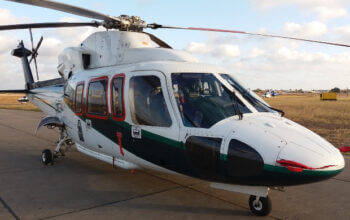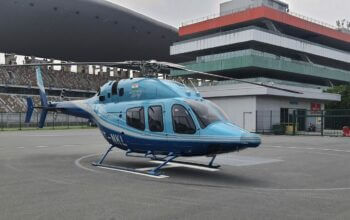Estimated reading time 9 minutes, 41 seconds.
Some had slept. Probably the veterans–those fighter pilots and bomber crews who knew what it was like the night before a “big show.”

Others, new to the idea of going into combat, likely tossed and turned, thinking of the thousand and one details that had been briefed the day before–or trying not to think at all, lest their thoughts stray to the unthinkable.
It did not matter now. Fresh or tired, the crews donned their goggles, gloves, boots and life preservers as they made their way to their squadron areas. Some may have spoken boastfully to their comrades of deeds to come, while others enjoyed the moments before dawn in thoughtful silence awed in part by what they had been told the day before. It was Wednesday, the 19th of August 1942, and Operation Jubilee was about to begin.
The aircrew had been told that Jubilee was to be “raid in force” involving more than 6,000 soldiers and commandos, supported by naval and air forces. The target was the French port of Dieppe in Occupied France. It was to be a hit and run operation; a chance to “poke Jerry in the eye.”
There were broader strategic and operational considerations but, if the airmen had been told that Jubilee would divert German attention from the beleaguered Russians on the Eastern Front, or acquire intelligence information and equipment, these considerations were well above their pay grade.
These lofty considerations were for the likes of Air Marshal Leigh Mallory, the Royal Air Force (RAF) officer commanding 11 Group and their “boss” for Jubilee. For the young men who would shortly climb into their Spitfires, or Mustangs or Boston and Blenheim bombers the focus was hit the target, dominate the airspace, protect the assault force and “have a go at Jerry.”
Aircrew tasked to fly the first sorties climbed into their aircraft as the ground crews purposefully went about making final checks. The airmen knew they had to be over the beaches by 0500 hours, the time of the initial assault. Engine after engine sprang to life, shattering the early morning with aviation noise.
Seventy-seven fighter and bomber squadrons had been assembled for Jubilee–almost 1,000 aircraft were manned by men brought together to defeat a common enemy.
There were Poles, Czechs, French, Norwegians and others from German-occupied lands. There were Americans whose fighter and bomber units had finally arrived in England and some, who came to the party early, in the uniforms of the RAF and Royal Canadian Air Force (RCAF).
Nine RCAF squadrons (400, 401, 402, 403, 411, 412, 414, 416 and 418) took part in Jubilee but, as was always the case, there were many more Canadians scattered amongst the RAF units.
For these pilots, gunners and observers, Jubilee had a more personal feeling as their countrymen, most from the 2nd Canadian Infantry Division, made up the bulk of the invasion force.
The first aircraft arrived over Dieppe just as dawn was beginning to break. A clear sky, deceptively calm, greeted the airmen. However, as the squadrons began their deadly tasks, the sky quickly filled with aircraft darting hither and yon, puffs of smoke from detonating anti-aircraft shells and the frighteningly beautiful lines of tracers arcing through it all.
As the day progressed, columns of smoke from burning naval craft, vehicles and buildings climbed ever upward like a forest of black, foul-smelling trees.
Squadrons that took off later in the day used these columns as guideposts to where they should go.
Each airman, according to their aircraft and mission, would have had a very different impression of that day. Although surrounded by their comrades, each Spitfire pilot was alone, cocooned in his aircraft with only the roar of the engine and his own thoughts to keep him company.
Occasionally a voice over the wireless (radio), sometimes calm, sometimes excited, sometimes frightened, would interrupt these thoughts. Calm and excited voices were to be acknowledged or obeyed; frightened voices were to be ignored with a “thank God it’s not me.”
Depending on fuel and distance, actual time in the vicinity of Dieppe was often measured in minutes, but when German fighters appeared, each minute seemed like an eternity.
Combat was brief and vicious, and demanding on both body and mind. Aircraft were thrown through the air in manoeuvres that tested the limits of both flesh and metal.
Suddenly, the sky would be full of aircraft, some with black crosses, moving at incredible speeds with each trying to close the gap between the hunter and the hunted to mere yards before firing.
Shells from cannons and machine guns streaked through the air like nimble fingers seeking a vital spot in machine or man. And then, it was over–and the sky empty as the pilot regained his bearings and sought the comfort of his wingman or squadron once again.
A quick check of the aircraft to see if there was damage, then it was back to the airfield for a gulp of water, a hurried meal, and then back for a repeat performance two, three or four times.
For aircrew in close support aircraft, the Hurricanes and bombers, their air war was slightly different. Their first attacks were made over pristine beaches and against untouched targets.
By late morning they approached over broken and burning craft, the sprawled bodies of Canadian soldiers and flew into the plumes of smoke that brought with it the bitter taste of defeat.
View obscured, they raced through the ever-present flak with only seconds to attack the designated target before they were through into deceptively welcoming clear skies harbouring enemy fighters. Then it was back to England to do it all over again.
Mustang pilots flew reconnaissance flights far from the battlefield keeping close watch on the approaches to Dieppe. Often with only a solitary wingman for company, they were to fight only as a last resort; knowledge was their primary weapon, and speed and stealth their best defence.
However, their missions brought them closer to enemy fighters and when “bounced” it was often unexpected–with deadly results. Mustang pilots would suffer the largest percentage of air losses during the battle.
Enemy action was not the only thing to be feared on that day. The fog of war can deliver some nasty surprises.
A 418 Squadron Boston aircraft joined the first sorties of the day, but a mistake by groundcrew unfamiliar with this aircraft meant that an undercarriage safety bolt was not removed and when airborne the aircraft’s wheels could not be raised.
Aborting the mission, the Boston became easy “meat” for a German fighter and was shot down; fortunately the crew survived.
Not so lucky were Pilot Officers John Gardiner (23, of Ottawa, Ont.) and Norman Monchier (19, of Dartmouth, N.S.) with 403 Squadron who were killed when their Spitfires collided during combat over Dieppe.
Flak also claimed its share of victims such as Flight Sergeant Stirling Banks (19, of Poplar Grove, P.E.I.), flying a Hurricane with No. 3 Squadron RAF, who was killed attempting to ditch his damaged aircraft in the sea off Dieppe.
The vast majority of casualties suffered by the Allied air forces that day were inflicted by a determined and skilled Luftwaffe.
Although total numbers are still debated, in 16 hours of combat approximately 106 aircraft were lost by the Allies compared to 48 German. Still, the Allied air forces had succeeded in their primary mission; they had put up a virtually impenetrable air umbrella over Dieppe and the naval convoy.
Attacks by the Luftwaffe were negligible with only one major ship damaged (it was later sunk by the Allies).
Sixty Allied airmen were killed, of which 13 were Canadian serving with RCAF and RAF squadrons. This number would have been much higher except for the often-unrecognized heroism of the Air-Sea Rescue organization.
But this number pales in comparison to casualties suffered by the Canadian Army at Dieppe.
Of the approximately 5,000 Canadian soldiers who took part in Operation Jubilee, 907 were killed and more than 1,900 wounded and captured.
The Canadian Army units that fought at Dieppe have this name inscribed with honour on their Colours, as do nine RCAF squadrons.
If you want to know more about the air battle at Dieppe, see Norman Franks, Dieppe: The Greatest Air Battle, 19th August 1942. London: Grubb Street, 1997.








